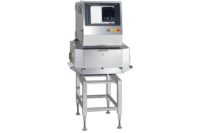X-Ray Systems for Packaged Meat and Poultry Products Meet Evolving Industry Needs

Just as meat and poultry products have changed in response to shifting consumer tastes and demands, so, too, have inspection technologies used to ensure the safety, consistency and quality of those items. While x-ray machines are regularly used to inspect traditional raw and bulk product in processing facilities, advanced inspection systems are installed to find and remove physical contaminants, conduct quality and integrity checks and enable better traceability in an array of packaged products, including trays, chubs, and boxes, among other forms and provide opportunities for process optimization.
“The growing diversity of packaged meat and poultry products brings a new and innovative dynamic to the industry, but also poses some challenges for processors who are adding to their portfolios while also keeping up with operational demands, staying compliant with stringent regulations and dealing with labor issues. Inspection systems can be used as a multifunctional tool to not only protect products and brands from potential hazards, but help processors run their lines more efficiently and flexibly,” says Michael Stuart, product specialist for Eagle Product Inspection.
According to Stuart, inline inspection systems help address many challenges that come from the ever growing variety of packaged meat and poultry products.
Chubs and clip closed products: By deploying x-ray systems, processors can detect contaminants, including bone as well as mineral stone, glass, metal fragments and other foreign bodies in chub products. Inspection systems can identify missing, extra or damaged clips in chubs and detect “blowouts” from overfilling of ground meat.
Case-ready products: Advanced x-ray machines detect calcified bone, mineral stone, glass and metal contaminants in case-ready products. In addition to providing a scan of final packaging, x-ray machines perform important quality checks, such as the detection of missing items and total weight and box content.
Prepared meals with meat and poultry ingredients: As demand for ready meals continues to increase, inspection systems find and reject contaminants in trays, cartons, boxes, pouches and other ready meal formats, while also being used to verify total and zonal weight and ensure the presence or absence of meal components.
Eagle continually updates its inspection systems and software to help processors deliver on consumers’ expectations for safety and quality of packaged meat and poultry products. For example, Eagle recently launched its next-generation Material Discrimination X-ray (MDX) technology. Initially focused on poultry applications, NexGen MDX is now the most powerful inspection technology available for detection of bone fragments in chicken breasts, by virtue of an image resolution three to four times greater than current capabilities and new advanced image analysis algorithms. NexGen MDX technology is powered through an updated version of Eagle’s proprietary SimulTask PRO image processing software.
In addition, Eagle now offers new item-level traceability. One example of this recent development is through the Eagle Pack 240 HC, which links inspection data to a unique identifier printed on each item. The machine is designed for easy sanitation in harsh environments like meat and poultry facilities. This specific system can be used to inspect fresh or frozen products in a variety of packaging formats, such as chubs, overwrapped trays, pouches, cartons, tubs, cups and plastic containers. In addition to foreign body detection, the Pack 240 HC conducts important quality checks like mass measurement, component count and the identification of missing/broken pieces. Additionaly, with item-level traceability, rejected images can be stored against product barcodes. This means that should there ever be a product returned to the producer, a check can be made using the bar code, to see the actual x-ray image of the actual product in questions.
For more information visit www.eaglepi.com.
Looking for a reprint of this article?
From high-res PDFs to custom plaques, order your copy today!







